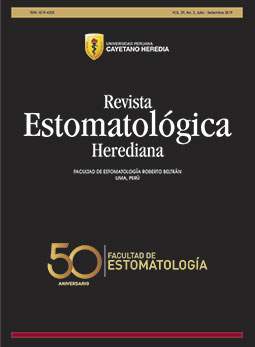Sphenomandibular muscle, is an independent muscle or is a fascicle of temporomandibular muscle?
DOI:
https://doi.org/10.20453/reh.v29i3.3601Keywords:
Regional anatomy; masticatory muscles; stomatognathic system.Abstract
Since the early 1990s, British dentists described the presence of the sphenomandibular muscle as a chewing muscle, then it was studied by Brazilian and Bolivian dentists, still exists the erroneous idea that his presence is real and has been questioned as an independent muscle. Objective: To demonstrate the presence of muscle sphenomandibular as independent muscle and its relationship with the temporal muscle. Material and methods: Followed a special dissection process suggested by Campohermoso et al, to verify the sphenomandibular muscle; they worked with seven human hemicabezas. Results: all specimens studied showed muscle sphenomandibular, checking an insertion in the front part of the bone pterygoid process sphenoid retromaxillary very close to the cleft sphenoidal close to the entrance of the common ocular motor nerve, and an insert lower on the crest of the inner side of the jaw coronoid process; independence of this there is muscle with the temporal muscle. The mean average of the muscle was 44.7 mm long, by 6.81 mm wide. Conclusions: The presence of the sphenomandibular muscle is not conclusive, is required to further studies in other areas such as embryological, structural, physiological and clinical aspects, this study will serve as the beginning of a line of analytical research of the chewing muscles.
Downloads
Downloads
Published
How to Cite
Issue
Section
License
The authors retain the copyright and cede to the journal the right of first publication, with the work registered with the Creative Commons License, which allows third parties to use what is published as long as they mention the authorship of the work, and to the first publication in this journal.























